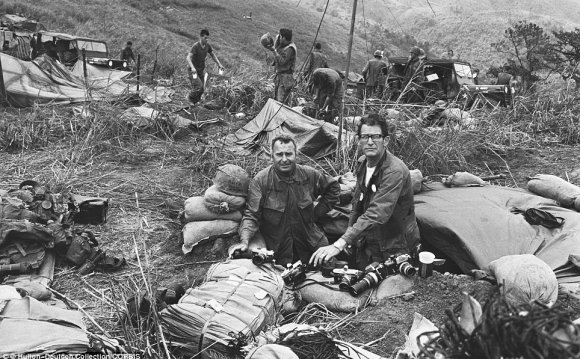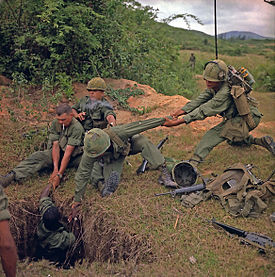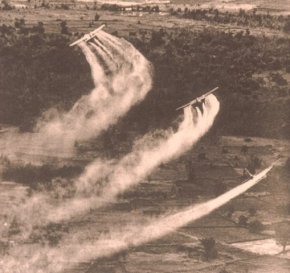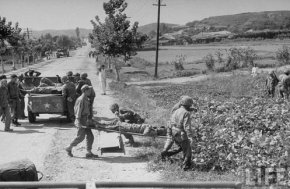
 Conditions of Warfare in Vietnam
Conditions of Warfare in Vietnam
By Tahlia, Caitlin and Maddy
People whether it was men or women (as nurses) they were under extreme mental and physical pressure. They had to deal a lot with the mental side of the war – watching people die, facing the terrible threat that the war could take your life but not only all the mental but physical as well – fighting under extreme conditions, using a gun while you’re running to save your life. All together this was a big feat for people in the war. The conditions were often fatal but there were some warfare conditions that were less significant but were still a factor in the war - Tahlia
Here is a video to start off and this is the blurb from the creator. The link is below too.
This is a video I put together with real video and real facts and is a tribute to all the Vietnam War Veterans, Fallen and Alive and those still missing.
91% of Vietnam Veterans say they are glad they served.
74% said they would serve again even knowing the outcome.
Vietnam Veterans are less likely to be in prison - only 1/2 of one percent of Vietnam Veterans have been jailed for crimes.
97% were discharged under honorable conditions; the same percentage of honorable discharges as ten years prior to Vietnam.
85% of Vietnam Veterans made a successful transition to civilian life.
More Facts
- Longest war in US history
- More than 58, 000 killed
- 300, 000 wounded
- 14, 000 disabled
- 800, 000 Vietnam veterans diagnosed as having significant to sever problems of readjustment
 Booby Traps wer e very dangerous and hard to identify where they were located.
Booby Traps wer e very dangerous and hard to identify where they were located.
Living and Fighting Conditions
The Vietman war was a jungle war. They had to battle snakes, leaches, mosquitoes, etc. There were booby traps located everywhere. There were various fevers, snake bites and "jungle rot". The soldiers traveled light and quiet and snipers they were hard to spot and difficult to destroy. Americans began to change their diet to rice and fish so that the soldiers couldn't track there location and movements. Fighting any war on the enemies turf is always harder. Many of the soldiers lived underground in tunnels that went for miles. The Vietcong (army in south Vietnam) hid behind innocent villagers and therefore the Americans had no choice but to kill innocent women, children and the elderly.
The soldiers fought in mud, tropical rains, extreme heat. They had to battle the "red rain" (Agent Orange) and there was also Agent White. They had some entertainment, but not as much as one would think. Drinking and drugs became a way of life for them to survive the horrors of the war and to try and forget. Many soldiers were highly addicted to morphine because they had been wounded and were not weaned off morphine properly (doctors had terrible conditions to work). - Referenced from
 These are the 'living conditions' they had to put up with during the war, drinking from a dirty drink bottle and cooking on outside stoves.
These are the 'living conditions' they had to put up with during the war, drinking from a dirty drink bottle and cooking on outside stoves.
Some of these less important conditions were things like – Extreme heat, Sun burn, blisters, booby traps of all kinds of varieties, dehydration, monsoon season, red dust, jungle rot, bush animals and insects like snakes, spiders, rats, leeches, poisonous centipedes, fire ants, scorpions, diseases such as malaria as well as trying to keep you sane so you wouldn’t go mad. - Tahlia
Troops fighting in Vietnam. "The Jungle War".
Some of the weaponry used during the Vietnam War
Medical Conditions
Hospitals had to work around the clock during the Vietnam War. Injured solders would come in without much warning and the doctors and nurses would have to operate for as long as 36 hours – maybe more – at a time.
At the front line there were small Medic stations where the medics there would put gauze over the wounds and stop the majority of blood flow before the soldiers were taken to the hospitals via bus, jeep or chopper where the doctors would operate and completely patch up the wounds. When the soldiers were healed enough to be sent back to their units they would be taken back via bus or jeep. If they weren’t healed enough they would be sent home. To be sent home, the soldiers had to have: lost a limb; lost eyesight; spinal cord injury; head wound; critical burns; etc.
Medic stations had to work through bombing and shelling.
Two of the most common causes for being evacuated to a Medic Station and then hospital were broken bones and shrapnel wounds and Agent Orange.
Used during the Herbicidal Warfare program by the United States Military during the Vietnam War, Agent Orange was used to clear the immense number of trees blocking the view of bomber planes. 4.8 million people were exposed to Agent Orange resulting in 400, 000 deaths and disabilities. 500, 000 children were born with birth defects. The chemicals in Agent Orange caused fire and serious burns. Agent Orange was the most used of the “Rainbow Herbicides”.
Broken bones and shrapnel wounds were unfortunately not a rare occurrence during the Vietnam War. Soldiers could get bones broken and shrapnel wounds as a result of bombs, torpedos, etc. Soldiers getting caught in booby traps could also lead to broken bones and shrapnel wounds. - Caitlin
RELATED VIDEO












